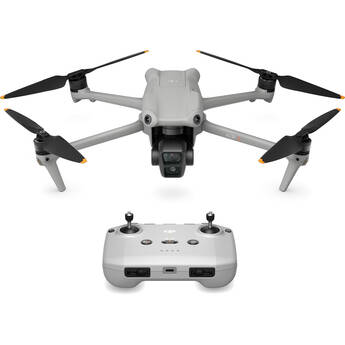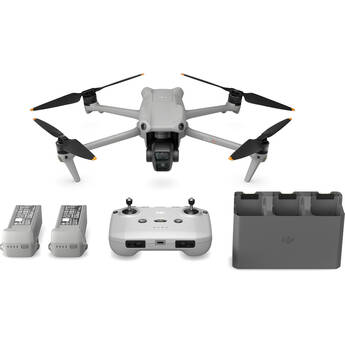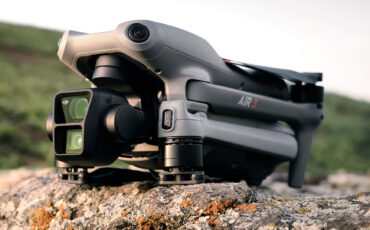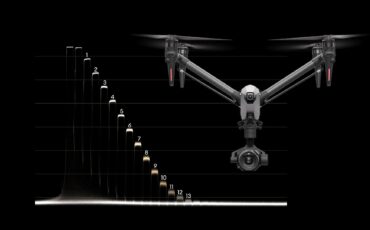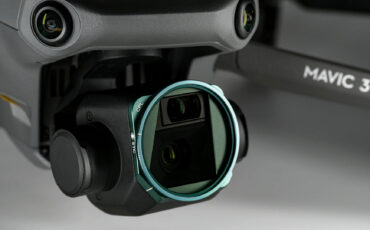DJI Air 3 Review – The King of Versatility with Two Usable Focal Lengths
Restriction-free music courtesy of Epidemic Sound. Sign up here: Epidemic
After flying with the DJI Air 3 for a few days, I think it is a very versatile drone. It offers two very usable focal lengths, a long flight time, and a nice 4K 100fps slow-motion mode. Check my video review for more information on the Air 3.
The last drone from DJI’s Air series, the Air 2S has been on the market since 2021. Now, the new generation has arrived. I had the chance to test the drone for a few days before its launch and I will share my findings with you in this article and video. If you want to see all the specs and features of the new DJI Air 3, head over here to my other article.
Body design, weight, battery
Apart from the dual-camera head, what strikes you first about the new Air 3 is that it has gained some weight. The body has been redesigned to match the look of the new Mavic 3 series, and it is now noticeably larger than the previous Air series drones. In fact, every new drone in the DJI Air series increased the takeoff weight somewhat.
- DJI Mavic Air (released in 2018) – take-off weight 430g
- DJI Mavic Air 2 (released in 2020) – take-off weight 570g
- DJI Air 2S (released in 2021) – take-off weight 595g
- DJI Air 3 (released in 2023) – take-off weight 720g
Honestly, I think the weight increase is a good thing. First of all, a heavier drone is more resistant to wind. Second of all, more weight means the battery pack can be heavier and this results in more air time – DJI says up to 46 minutes.
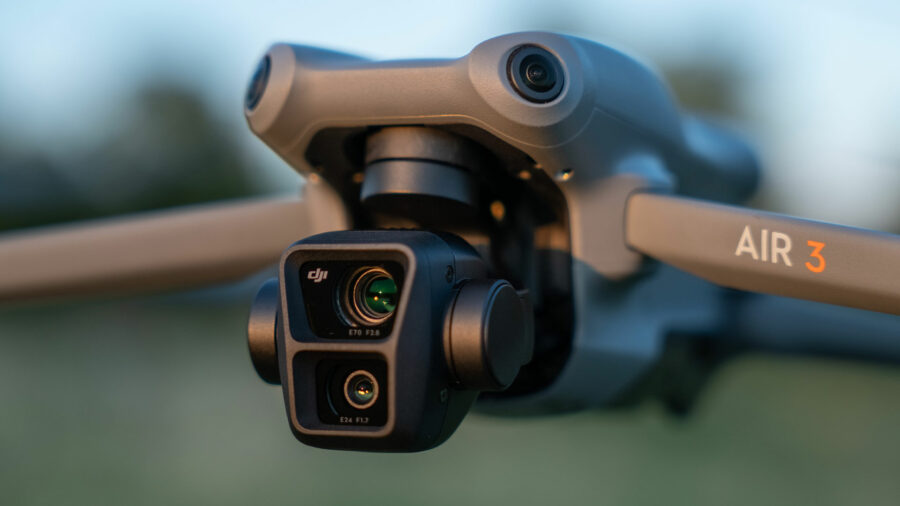
DJI Air 3 comes with a C1 label in Europe
Thankfully, the increased weight of the DJI Air 3 still does not put it in a different category when it comes to drone regulations. In Europe, the Air 3 comes with a C1 label, which allows for a maximum take-off weight of 900g and puts the drone in the A1 subcategory. For instance, the recently announced DJI Mavic 3 Pro slightly exceeds the 900g weight and therefore has to have a C2 label in Europe. This puts it into the A2 subcategory that brings further restrictions and requirements. This is all part of the new drone regulation that will be fully effective from January 1, 2024. In the United States, according to the FAA, the rules are the same for all drones between 250g and 25kg (55 lbs).
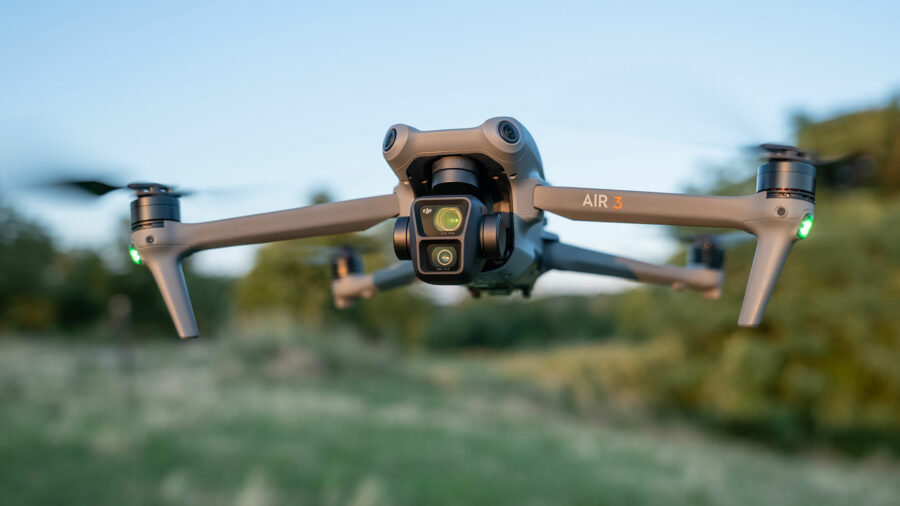
The DJI Air 3 now has omnidirectional obstacle sensing. There is a sensor on each of the four corners of the drone and a few more sensors along with an LED light at the bottom. Apart from all the sensors on its body, the Air 3 has an internal fan, so it will not overheat during firmware updates or longer idle periods. For my DJI Mini 3 Pro, for instance, I ended up buying a small fan to keep it cool while updating firmware.
Cameras – two usable focal lengths and 4K 100fps
Now, let’s finally talk about the most interesting part of the new Air 3 – the cameras. For the first time in DJI’s Air series, there is a dual camera system. There are two sensors and two lenses in the gimbal-stabilized camera head – 24mm f/1.7 and 70mm f/2.8. The minimum focus distance is 1m for the wide-angle camera and 3m for the telephoto camera.
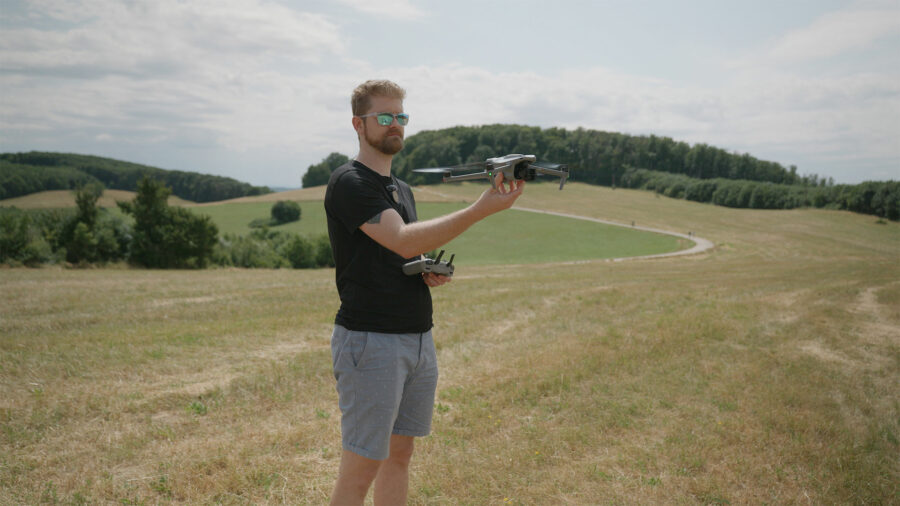
I think these are both very usable focal lengths and another great thing is that both sensors are the same size, same resolution, and capable of the same framerates. These are both DJI’s stacked 1/1.3″ type 48MP (8064 x 6048) sensors. It is the same sensor that is used in the Mini 3 Pro, and the wide-angle camera of the Air 3 even uses the same lens as the Mini 3 Pro.
Traditionally in the Air series, the aperture on both cameras is fixed, so to keep the shutter speed near the 180° rule, ND filters are a must. DJI is selling a four-piece ND filter set with ND strengths of ND8, ND16, ND32, and ND64. Unfortunately, I didn’t have this set for my review, so the shutter speed in my clips is all over the place.
Compared with the previous DJI Air 2S, which was capable of a 5.4K video with a larger one-inch type sensor, the maximum video resolution with the Air 3 is UHD 4K. In normal mode, 4K is available in 24, 25, 30, 48, 50, and 60 frames per second.
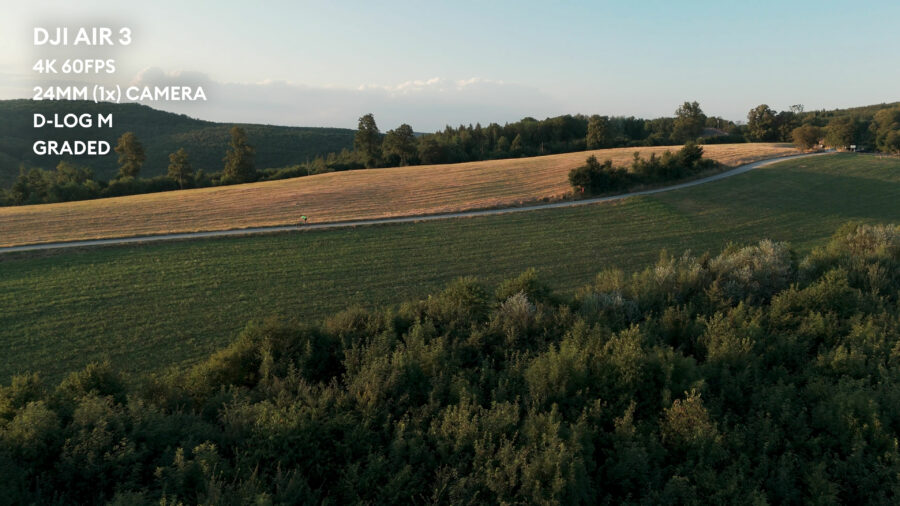
In slow motion mode, 4K UHD is available at 100fps and FHD at 200fps. Here I need to mention that slow-motion clips are slowed down in the drone and saved as 25 fps clips, so keep that in mind if your project has a different base framerate.
The bitrate is limited to 150Mbps in H.265 codec wrapped in an MP4 container. Some modes are also available in the older H.264. From my understanding, in video mode, the drone uses a binned 12MP version of the sensor and there is no oversampling.
D-Log M with 10-bit color, sharpness, and NR settings
Apart from the normal color mode, each camera can record in a D-Log M profile with 10-bit 4:2:0 color. I shot most of my clips in D-Log M. When grading, I tweaked white balance, brightness and contrast, and then used the old D-Log M to REC.709 LUT from DJI, which was created for the Mavic 2 Pro as I could not find any newer version of the LUT. I found this LUT to be too heavy on the saturation, so I invariably had to tune it down a bit. I hope DJI will provide a new, more accurate version of the LUT for each new drone model that supports the D-Log M.
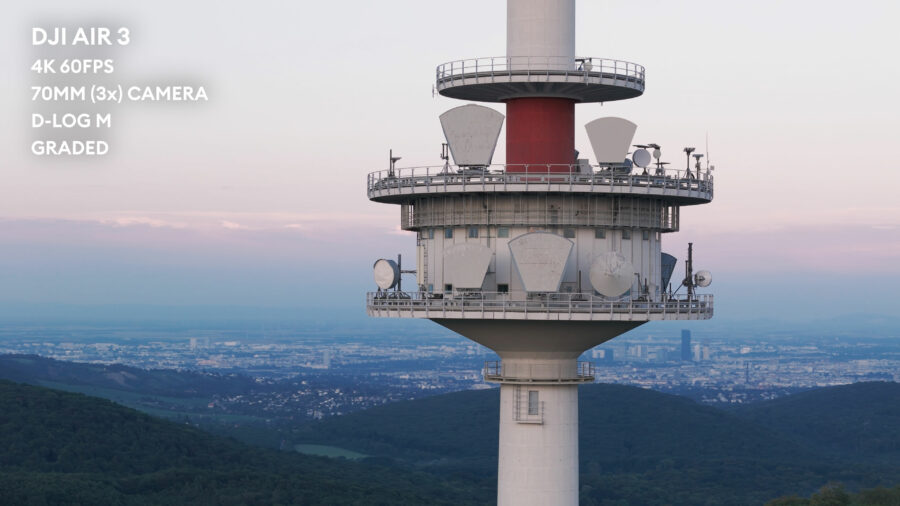
When I was flying the DJI Air 3 for my review, I could not change the sharpness and noise reduction. This is something I like about my Mini 3 Pro as I can tune these settings down and deal with noise and sharpness in post-production if needed. DJI told us these settings will be available with the final firmware, so this is good news.
Comparison with DJI Mini 3 Pro
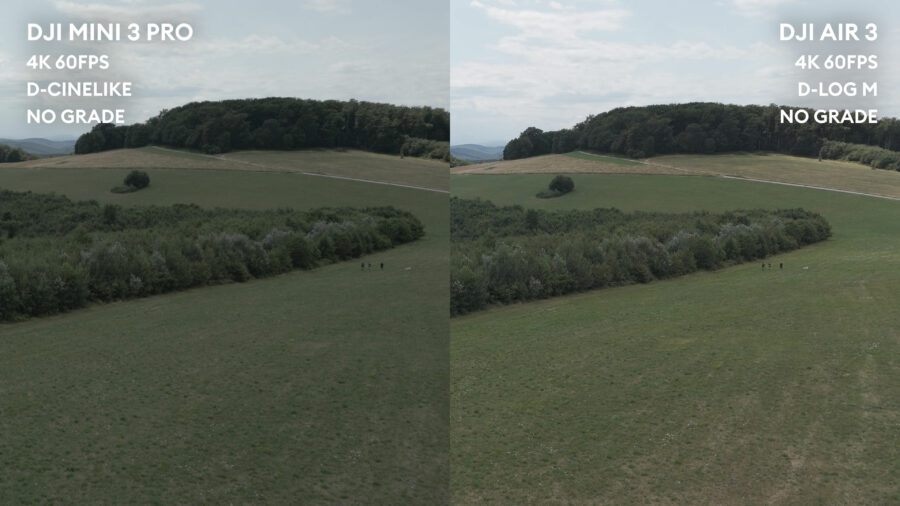
Talking about the Mini 3 Pro, I tried to compare the D-Cinelike from the ultra-light drone with the D-Log M from the Air 3. I used the same settings and filmed a landscape side-by-side. Comparing the ungraded clips, I find the D-Cinelike from the Mini 3 Pro slightly darker. It is also visible that the Mini had the noise reduction and sharpness turned all the way down. After grading, I can hardly see any difference at all.
Adjustable maximum speeds, upwards tilt
Unfortunately, unlike mobile phones that have multiple cameras, it is not possible to switch cameras while recording a clip on the Air 3. You have to end the clip, switch the cameras, and then start recording again.
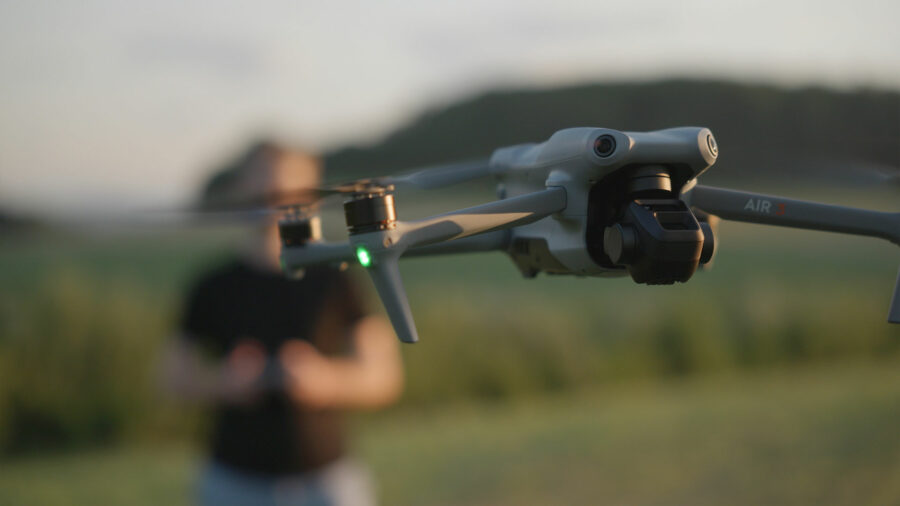
Two more things I like about the new DJI drones, and Air 3 is no exception:
- First of all, the camera of the drone can look up. It can be tilted up to 60° upwards, which enables more creative angles.
- Secondly, it is possible to change the maximum flight speed of each mode (cine, normal, and sport). This is useful for achieving very slow movements with the cine mode.
Vertical video, photos
If vertical video is important for you, the Air 3 can film up to 2.7K 60fps vertically. However, unlike the Mini 3 Pro, the Air 3 camera cannot physically rotate by 90° to better capture vertical footage. Instead, it uses the full height of the 4:3 sensor and will therefore give you more vertical resolution and field of view than simply cropping from a horizontal 16:9 video.
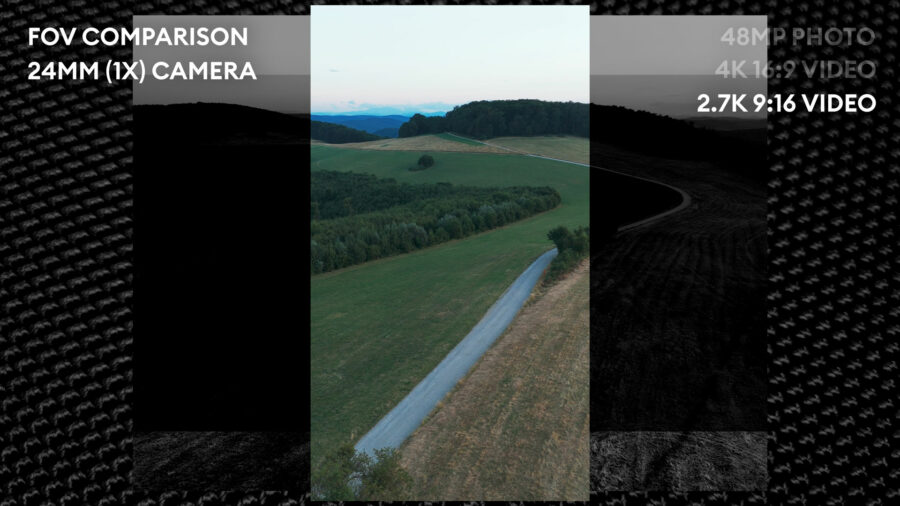
To demonstrate this, I made a simple FOV comparison test. You can see a still photo, horizontal video, and vertical video that I made while hovering in one spot. The same mechanism applies to both of the DJI Air 3 cameras.
When it comes to still photos, both cameras can shoot up to 48MP photos in either JPG or DNG raw format. There are also some automatic panoramic modes, but I did not test these as I prefer flying manually for full control.
Night mode
The Air 3 also offers a so-called night mode for video, but it is limited to a maximum of 30fps and is only available with the normal color profile, so only in 8-bit. It allows the ISO to be set all the way up to 12.800. I tried the night mode at ISO 3200, but the image quality was not very good as the drone’s noise reduction heavily processed it.
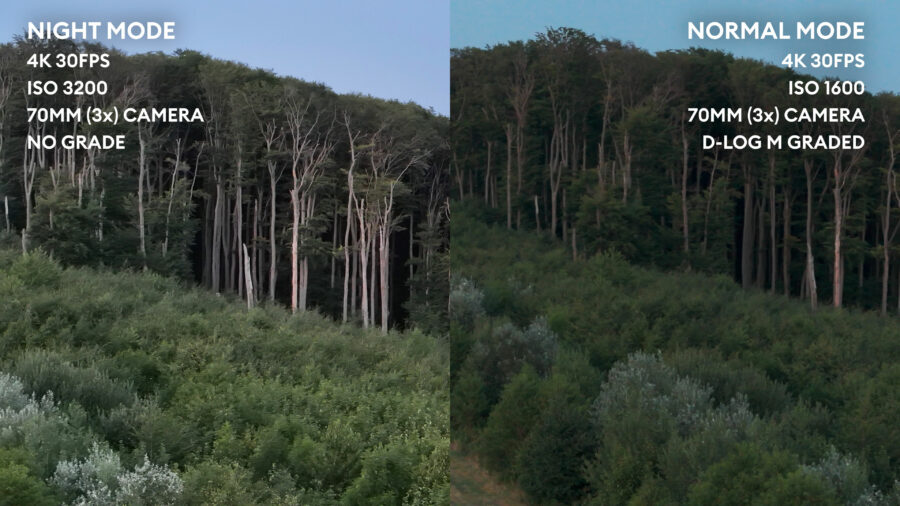
I would honestly stay in the normal mode and use the D-Log M 10-bit mode. Higher ISO footage is, however, generally not good with this drone. If you need to film in low-light environments often, I would opt for one of the Mavic 3 series drones with their micro four-thirds cameras.
New RC2 controller
The new DJI RC2 controller is very similar to the DJI RC. It features the same button layout and a bright 5.5″ screen. What is new are these two external antennas that can be optimally positioned depending on the drone’s location. The remote has 32GB of internal storage that can be expanded with a microSD card.
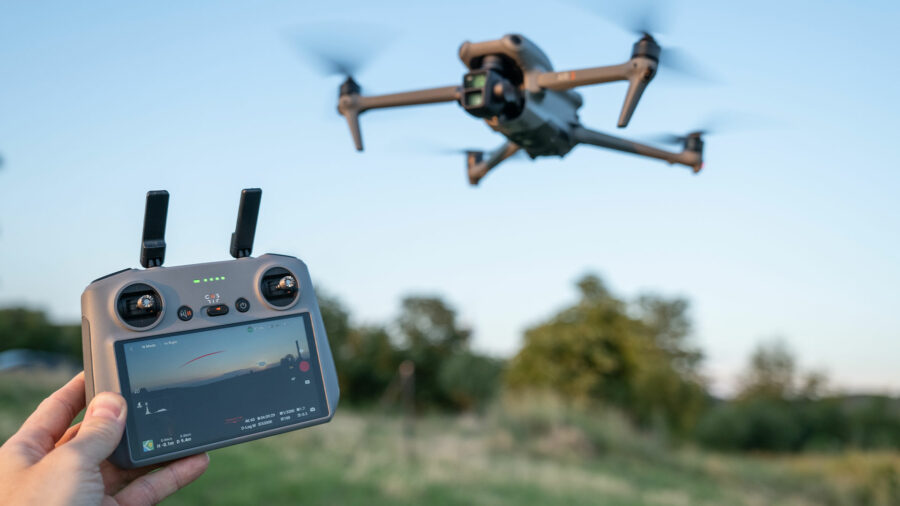
The only thing that bothered me was that I could not hide the timer of the screen recording, I could only move it, but it is still visible in the screen recording itself. Also, the DJI Fly app was constantly showing me notifications to update FlySafe, but it was already up to date. I suppose this is only a beta app bug that disappears with the full release.
Charger – power accumulation
The battery charger now has a special function called power accumulation and I think it might be useful in certain scenarios. The charger has the ability to consolidate the remaining power of all three batteries into the one with the highest charge, resulting in extended flight time for that particular battery. It accomplishes this without needing to plug anything in.
O4, ActiveTrack, Waypoint, Price, etc
The Air 3 has a new O4 video transmission system, which extends the maximum reach and makes the signal once again more robust. Very interesting is also the option to plan a route with waypoints, save it, and let the drone fly the route automatically and repeat it whenever you want. The drone again offers a variety of smart features such as ActiveTrack. It should be able to maneuver itself through terrain and follow the selected subject.
Conclusion, price, and availability
To summarize my findings, the DJI Air 3 is a really versatile drone. It offers two very usable focal lengths on two cameras that can easily match each other, thanks to the same image sensors. The flight time is very good. I am a big fan of the 4K 100fps mode. Because of the smaller sensors, however, the low-light performance is not great. Also, the competition is tough – there is the ultra-lightweight sub 250g Mini 3 Pro with the same wide-angle camera as the Air 3 and true vertical mode. Then there is the DJI Mavic 3 classic with a much better main camera. I would say the Air 3 is the king of versatility and I think the C1 label will further increase its popularity in Europe.
The DJI Air 3 is available now and there are three different configurations:
- DJI Air 3 with RC-N2 costs $1,099 (around €1,118.24 with VAT in Europe)
- DJI Air 3 Fly More Combo with RC-N2 sells for $1,349 (around €1,349 with VAT in Europe)
- DJI Air 3 Fly More Combo with RC 2 sells for $1,549 (around €1,549 with VAT in Europe)
As always, there is a wide variety of accessories (such as ND filters, wide-angle lens adapter, car charger, etc.) that can all be purchased separately.
What do you think about the new DJI Air 3 drone? Is it a worthy successor of the Air line? Let us know in the comments section underneath the article.
